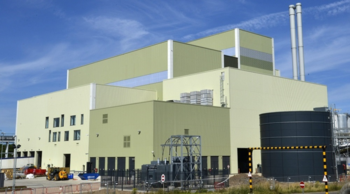Wilton 10

Summary
An EfW facility based upon conventional combustion technology and considered an ERF based on its R1 status. Wilton 11 has a permitted operational capacity of 444,000 tonnes per annum, and is owned by a joint venture between Suez and Sembcorp and operated by Suez. Delivery of waste is primarily by rail and the facility processes primarily residual Household Waste and some Commercial Waste[1].
History
The Wilton 11 facility was built primarily to service a 30 year PPP contract signed in April 2013 with Merseyside [2], with anticipated input of 440,000 tonnes per annum i.e the majority of the tonnage. Residual Waste is loaded at Knowsley Rail Transfer Station prior to its transport to Wilton 11. It was formally opened in June 2018 [3]. It is located in Teeside on the Wilton International Industrial Estate and is discrete from Wilton 10 which is a Biomass Waste EFW project.
Plant
Built by CNIM and Clugson construction started in 2014 and was completed in 2016 at a reported £250m capital cost, generating 49 MWe and steam for the adjacent Sembcorp site, although the listing does not show it to be a CHP plant[4]. The finance and delivery was under a build, own, operate and transfer contract with Merseyside.
Local Authority Users
The following data comes from WasteDataFlow for the financial year 2018/19 and represents those local authorities recorded as putting tonnage into the site (either directly or via a transfer station). The tonnage received cannot be directly compared with the stated historical tonnage received and recorded in the EA statistics as these are recorded on a calendar year basis (i.e. January 2018 to December 2018). A 'zero return' below indicates no local authority tonnage was recorded, most likely a result of the plant being recently commissioned and actually having received no tonnage. Equally, lower than expected tonnage maybe a result of either a new plant being in 'ramp up' towards full capacity after construction, or may be a result of plant shut down and subsequent re-start in a year.
